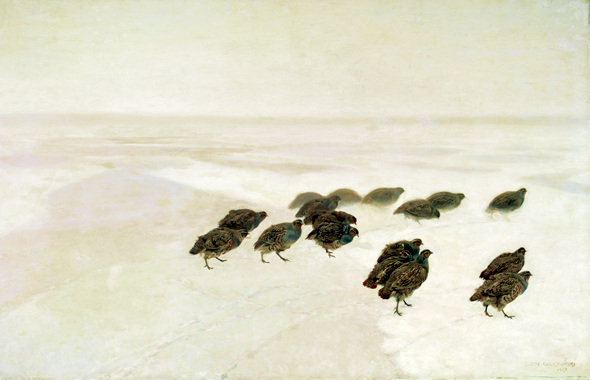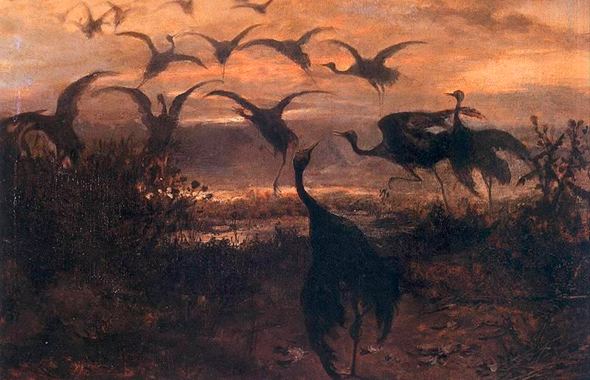

Józef Chełmoński (November 7, 1849 – April 6, 1914) was a Polish painter of the realist school, rooted in the historical and social context of the late Romantic period in Poland. He is famous for his monumental paintings in the National Art Gallery (Sukiennice) in Kraków and the National Museum in Warsaw.
Chełmoński was born in the village of Boczki near Łowicz in the Kingdom of Poland. From 1871 to 1874, Chełmoński lived in Munich. He worked with Polish painters such as Józef Brandt. His works were mostly landscapes and scenes of villages. In 1875, Chełmoński went to Paris, where he participated in major exhibitions and became known in the art world.
From 1878 to 1887, Chełmoński visited Poland, Vienna, and Venice. In 1887 he returned to Poland, and in 1889 he settled in the village of Kuklówka Zarzeczna, near Warsaw. His connection to his homeland and nature are recurring themes in his artwork.
He combined an amazing ability to observe the landscape with an excellent painting technique, which he managed to develop over the years.



0 comments